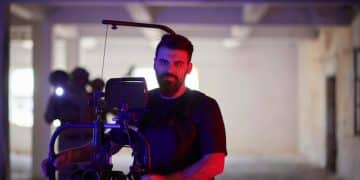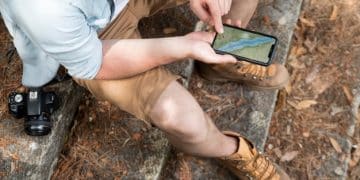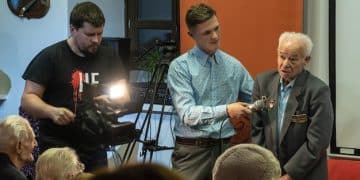Location scouting: Finding the perfect setting
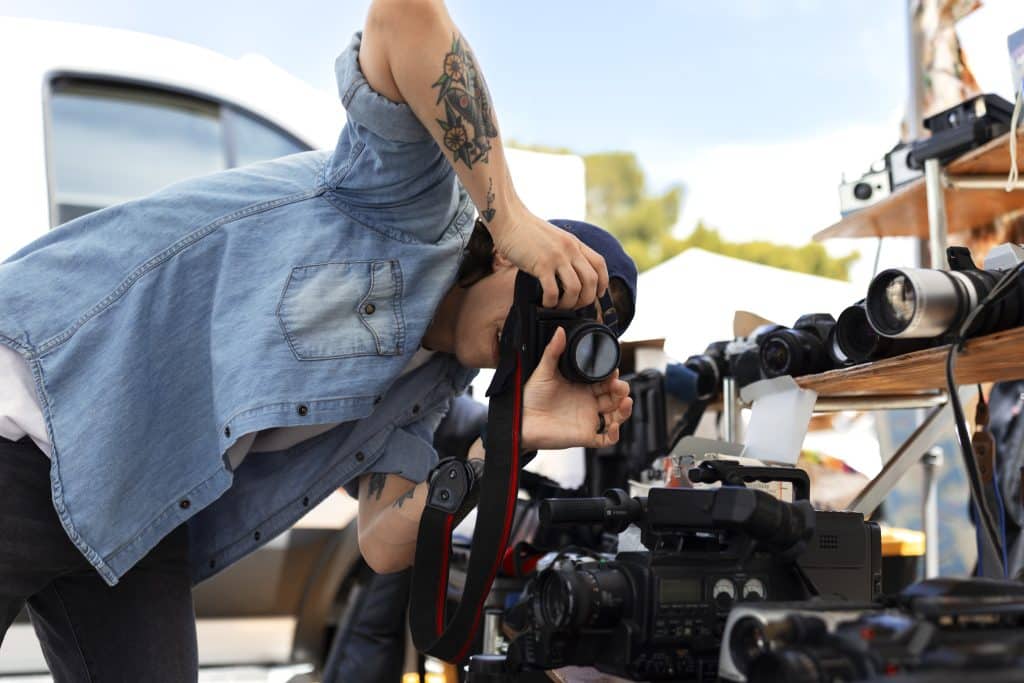
Location scouting plays a vital role in shaping the success of any visual production. More than just finding a place to film or photograph, it is about discovering a backdrop that enhances mood, context, and authenticity.
The right setting can transform a story, while the wrong one can weaken its impact. The process of location scouting is filled with both challenges and triumphs.
Filmmakers, photographers, and event planners often face logistical obstacles, creative demands, and unexpected surprises along the way.
Yet, when the perfect setting is secured, it becomes the foundation of powerful visual storytelling, turning vision into reality and elevating the entire project.
The art and science of location scouting
Location scouting is far more than simply finding a pretty place. It’s a complex blend of artistic vision, logistical planning, and practical problem-solving.
This initial phase dictates much of a production’s success, influencing everything from the narrative tone to the budget and shooting schedule.
It requires a keen eye for aesthetics, an understanding of the script’s needs, and a realistic grasp of a location’s feasibility.
The scout’s role is to bridge the gap between creative ambition and practical reality, translating abstract concepts into tangible spaces.
They must consider how a location will look on camera, how sound will behave, and whether it aligns with the story’s emotional core.
This involves meticulous research, networking, and a lot of on-the-ground exploration, often in unconventional places.
Each potential site presents its own set of variables that must be carefully weighed against the production’s specific demands.
Understanding the production’s vision
Before any physical scouting begins, a location manager or scout must fully immerse themselves in the production’s vision.
This means a deep dive into the script, discussions with the director, cinematographer, and production designer, and an understanding of the overall aesthetic.
Without this foundational knowledge, the search can become Muddled and unproductive.
- Script Analysis: Break down specific scenes, looking for verbal cues and implied atmosphere. Does the scene require a grand, imposing space or an intimate, claustrophobic one?
- Director’s Vision: Understand the director’s aesthetic preferences, use of color, light, and how they envision the characters interacting with the environment.
- Production Design: Collaborate closely with the production designer to ensure the chosen locations can accommodate set dressing, props, and any built elements needed.
The initial concept meeting is critical for setting the right direction. It helps to establish parameters for the search, clarifying what is non-negotiable and where there might be room for creative interpretation.
This collaborative approach ensures that the scouting effort is always aligned with the project’s core artistic and technical requirements, preventing wasted time and resources on unsuitable options.
Logistical planning and feasibility
Once the creative brief is absorbed, the practicalities come to the forefront. A stunning location is useless if it’s impossible to film in.
Logistical feasibility is paramount, covering everything from accessibility and legal permissions to the inherent challenges of the environment itself.
The scout must anticipate potential problems and assess how they might impact the budget and schedule.
Consideration must be given to local regulations, noise ordinances, and potential disruptions to local communities. The scout often acts as an ambassador, building relationships with property owners and local authorities.
This foresight helps to mitigate risks and ensures a smoother production process once filming commences, avoiding last-minute crises that can derail an entire project.
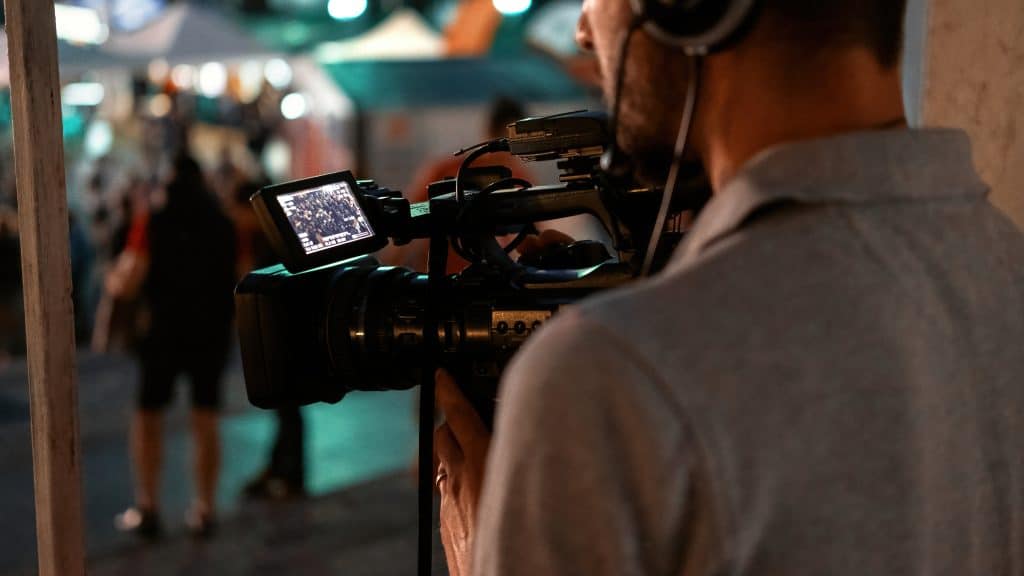
The challenges faced by location scouts
The path to finding the perfect location is rarely smooth. Location scouts encounter a myriad of challenges, from the mundane to the truly extraordinary.
These obstacles demand resilience, creativity, and exceptional problem-solving skills, often requiring swift adaptation to unforeseen circumstances. Navigating these difficulties is central to the scout’s daily work.
Navigating permitting and bureaucracy
Securing the necessary permits is often one of the most tedious yet critical aspects of location scouting.
Each city, state, or private property has its own rules and regulations, which can be complex, time-consuming, and expensive to navigate.
The bureaucratic red tape can delay production schedules significantly if not handled efficiently.
For instance, filming in a major city typically requires permits from multiple departments: film commissions, police, public works, and often, specific neighborhood associations.
Public spaces, historical sites, and private properties each have distinct requirements. This process involves filling out extensive paperwork, providing detailed production plans, securing insurance, and often, negotiating fees.
Missteps in this area can lead to fines, forced shutdowns, or even legal action, making meticulous adherence to guidelines non-negotiable for a professional scout.
Weather and environmental factors
Mother Nature is an unpredictable element that can significantly impact a scout’s work and a production’s schedule.
Outdoor locations are inherently susceptible to weather changes, which can drastically alter the appearance of a setting, affect equipment, and pose safety risks to cast and crew.
A location that looks spectacular on a sunny day might be completely unusable in heavy rain or deep snow.
Environmental concerns also extend to natural light. A scout must understand how the sun moves across a location throughout the day and how that will influence shooting times and cinematic mood.
Beyond weather, factors like noise pollution from nearby traffic, construction, or aircraft can render an otherwise ideal location unusable, requiring the scout to assess ambient sound levels diligently during their visits.
Budgetary and logistical constraints
Even the most breathtaking locations can be out of reach if they don’t align with the production’s budget and logistical capabilities.
High property rental fees, extensive insurance requirements, and the cost of transporting equipment and crew can quickly inflate expenses.
A scout must continuously balance creative desires with financial realities, often needing to find creative alternatives.
- Accessibility: Is the location easily accessible for large production vehicles, equipment trucks, and the entire crew? Remote locations might be visually stunning but present massive logistical hurdles and add to transportation costs.
- Power and utilities: Does the location have sufficient power sources for lighting, cameras, and other equipment? If not, the cost of bringing in generators must be factored in.
- Accommodation and facilities: For extended shoots, proximity to lodging, restrooms, and catering facilities becomes critical. Lack of these amenities can lead to significant additional costs and discomfort for the crew.
These practical limitations often force scouts to think outside the box, seeking out locations that offer a similar aesthetic or functional purpose at a more manageable cost.
The scout’s ability to provide creative, budget-conscious solutions is a testament to their expertise. It’s not just about finding the best location, but the best feasible location, given all constraints.
Triumphs and creative solutions in scouting
Despite the formidable challenges, location scouting is also a realm of remarkable triumphs and ingenious problem-solving.
Success often lies in the scout’s ability to see potential where others see only obstacles, transforming limitations into opportunities.
These creative breakthroughs are what elevate a simple backdrop into a defining element of a visual narrative.
Reimagining familiar spaces
One of the true triumphs of a skilled location scout is the ability to transform an ordinary, familiar space into something extraordinary on screen.
This often means looking beyond the obvious, considering how lighting, set dressing, and camera angles can completely alter the perception of a mundane environment.
A nondescript office building might become a high-stakes government agency, or a derelict warehouse, a vibrant art gallery.
This creative reimagining requires a profound understanding of visual storytelling and a collaborative spirit with the production designer.
It’s about seeing the “bones” of a place and envisioning how they can be manipulated to serve the narrative.
Often, these transformations are more cost-effective and logistically viable than searching for a perfectly ready-made, ideal location, showcasing the scout’s resourcefulness.
Finding new perspectives on common places can yield surprisingly powerful results for the visual story.
Leveraging local networks and relationships
Beyond official channels, a location scout’s greatest asset often lies in their personal network and ability to build rapport within local communities.
Many hidden gems and unique private properties are only accessible through trusted connections and word-of-mouth.
Building these relationships takes time, patience, and a genuine respect for the people and places involved.
- Community engagement: Engaging with locals can open doors to properties not typically listed or available through formal channels. A friendly approach and clear communication build trust.
- Realtors and property managers: Developing relationships with real estate professionals can provide leads on empty buildings, vacant lots, or properties that are on the market and might be open to temporary rentals.
- Film commissions: Local film commissions are invaluable resources, offering databases of locations, information on permits, and connections to property owners who are accustomed to hosting productions.
Successful scouts understand that a good relationship with property owners can smooth out many potential issues down the line, from negotiating access times to addressing unforeseen logistical needs.
These informal networks can often circumvent bureaucratic hurdles and present opportunities that formal searches might miss entirely, leading to truly unique and impactful settings.
The impact of the perfect location
The meticulous effort poured into location scouting culminates in the selection of a setting that not only fulfills the script’s requirements but elevates the entire production.
The perfect location is more than just a backdrop; it is a character in itself, influencing mood, enhancing narrative, and leaving a lasting impression on the audience.
Its impact reverberates through every aspect of the final product.
Enhancing narrative and atmosphere
A well-chosen location has the power to speak volumes without a single line of dialogue. It can instantly communicate time periods, social statuses, cultural contexts, and emotional states.
Think of the gothic grandeur of a haunted mansion or the bustling anonymity of a crowded city street. Tthese settings inherently carry their own narratives and contribute profoundly to the atmosphere.
They are not merely stages but active participants in the storytelling process. The right environment deepens the audience’s immersion, making the story feel more tangible and real.
It helps to define character personalities, reflecting their internal and external worlds.
The meticulous selection of a location, down to its smallest architectural detail or natural element, ensures that every visual cue is intentional, reinforcing the story’s themes and emotional resonance.
The atmosphere created by the setting becomes an integral part of the cinematic experience.
Operational efficiency and cost savings
While the aesthetic contribution is paramount, a perfectly scouted location also brings significant practical benefits, directly impacting a production’s bottom line.
A location that seamlessly accommodates operational needs can save thousands, even millions, of dollars in production costs.
This efficiency stems from foresight and thorough planning during the scouting phase, minimizing unforeseen expenses.
For example, a location with existing infrastructure that minimizes the need for extensive set construction, or one that offers natural lighting that reduces reliance on artificial lighting setups, directly translates to cost savings.
Similarly, a location that provides ample space for crew, equipment, and catering trailers streamlines logistics and improves crew morale and productivity.
Avoiding expensive last-minute changes or complex improvisations on set is a testament to effective scouting, proving that the initial investment in thorough research pays dividends in the long run.
The evolution of location scouting in 2025 and beyond
The landscape of location scouting is continually evolving, driven by technological advancements, shifting production demands, and a heightened awareness of sustainability.
The advent of new tools and methodologies is transforming how scouts operate, making the process more efficient, comprehensive, and globally accessible.
These changes are shaping the future of finding the perfect setting.
Technology’s role in modern scouting
Technology has revolutionized many aspects of location scouting, from initial research to virtual visits.
Geographic Information Systems (GIS), drone photography, and 3D scanning are now indispensable tools in a scout’s arsenal, offering unprecedented levels of detail and a broader scope of exploration.
These innovations reduce the need for extensive physical travel in the preliminary stages.
Virtual scouting using high-resolution panoramic images, 360-degree videos, and even virtual reality (VR) tours allows directors and production designers to explore potential locations from their offices, saving time and resources.
This pre-visualization capability helps to narrow down options more effectively before physical visits are deemed necessary.
Furthermore, advanced mapping software and satellite imagery provide crucial insights into terrain, accessibility, and environmental factors, streamlining the initial assessment process significantly.
- Drone footage: Provides aerial views, allowing scouts to assess scale, surrounding environment, and potential camera angles from above.
- 360-degree photography/video: Offers immersive virtual tours, giving stakeholders a comprehensive feel for the space without being physically present.
- Location databases and apps: Digital platforms housing extensive libraries of scouted locations, often with detailed information on permits, past productions, and availability.
These technological aids not only enhance efficiency but also enable scouts to present locations with richer, more data-driven insights, facilitating quicker and more informed decision-making for the production team.
The integration of advanced digital tools is quickly becoming standard practice for effective modern scouting operations.
Sustainability and ethical considerations
As the film industry increasingly focuses on environmental responsibility, location scouting is also adapting to more sustainable and ethical practices.
This means prioritizing locations that minimize ecological impact, respecting local communities, and operating with a reduced carbon footprint. Scouts are playing a crucial role in promoting greener productions.
Considerations now extend to assessing a location’s energy efficiency, waste management capabilities, and the potential impact of production activities on local ecosystems.
Scouts are often tasked with identifying locations that are easily accessible by public transport or offer opportunities for carpooling, reducing transportation-related emissions.
Furthermore, engaging local businesses for catering and supplies not only supports the community but also reduces the logistical carbon footprint.
The ethical dimension involves ensuring fair compensation, clear communication with property owners, and minimizing disruption to residents.
This shift towards sustainability is transforming location scouting into a more conscientious and responsible practice within the industry, balancing creative needs with environmental stewardship.
Future trends in location scouting
Looking ahead, several key trends are poised to further shape the world of location scouting.
The integration of artificial intelligence, the growing demand for diverse and culturally sensitive locations, and the emphasis on a truly global reach are just some of the developments impacting the industry.
These trends underscore the dynamic nature of the profession, emphasizing adaptability and foresight.
AI and data analytics in site selection
The future of location scouting will likely see an even greater integration of artificial intelligence and sophisticated data analytics.
AI algorithms could potentially analyze scripts, character profiles, and directorial preferences to suggest suitable locations from vast databases, based on aesthetic, logistical, and even emotional criteria.
This automated preliminary scouting could dramatically reduce the initial search time.
Data analytics can also provide insights into the feasibility of locations based on historical weather patterns, traffic data, and local event schedules, preempting potential issues before a physical visit.
Imagine an AI that can forecast optimal shooting times based on light patterns or predict potential noise disruptions from nearby flight paths.
This move towards data-driven decisions will make the initial selection process more precise and efficient, allowing human scouts to focus on the nuanced, qualitative assessment of shortlisted sites.
The goal is not to replace human intuition but to empower it with comprehensive, intelligent data.
Culturally sensitive and authentic locations
There’s a growing imperative in storytelling for authenticity and cultural sensitivity, particularly in a globalized production landscape.
This trend significantly impacts location scouting, requiring scouts to be more attuned to the cultural nuances and historical significance of potential sites.
It goes beyond mere aesthetics to ensuring that locations genuinely reflect the narrative’s context without perpetuating stereotypes or causing offense.
This means working closely with local communities and cultural advisors to understand the appropriate use of a space, the protocols for respectful interaction, and the potential impact of a production.
Scouts are increasingly becoming cultural liaisons, ensuring that locations are chosen not just for their visual appeal but for their accurate and respectful representation of diverse cultures.
This shift ensures that productions are not only visually stunning but also socially responsible and inclusive, enriching the storytelling experience authentically.
The global reach of scouting
As film and media production becomes increasingly globalized, the scope of location scouting expands exponentially.
Productions are no longer confined to traditional filmmaking hubs but actively seek out unique and cost-effective locations worldwide.
This global reach presents both exciting opportunities and complex challenges, from understanding international permitting laws to navigating vastly different cultural landscapes.
Scouts equipped with international experience and a deep understanding of diverse regulatory environments are becoming increasingly valuable.
The ability to source and secure locations across different continents while managing logistics, customs, and international legalities is a specialized skill.
This global perspective also fosters greater diversity in visual storytelling, bringing audiences new, rarely seen backdrops.
The future of location scouting is undeniably international, demanding a broad worldview and sophisticated cross-cultural communication skills from those at its forefront.
| Key Aspect | Brief Description |
|---|---|
| 🎨 Creative Vision | Aligning locations with the narrative and director’s aesthetic. |
| 🚧 Logistical Hurdles | Navigating permits, weather, and budget constraints. |
| 💡 Innovative Solutions | Reimagining spaces and leveraging local networks. |
| 🚀 Future Trends | Impact of AI, sustainability, and global reach. |
Frequently Asked Questions (FAQ) about location scouting
The primary goal of location scouting is to find and secure suitable settings that fulfill the creative vision of a production while remaining within practical, logistical, and budgetary constraints. It involves assessing how a space will contribute to the narrative and ensuring it’s feasible for filming or events. The perfect location enhances storytelling and streamlines production processes.
Technology significantly aids modern location scouts through tools like drones for aerial views, 360-degree photography for virtual tours, and GIS for detailed mapping. These advancements allow for more efficient initial assessments, reduce travel time, and enable virtual collaboration with remote teams. They streamline the selection process, making it more data-driven and precise.
The biggest challenges in location scouting typically include navigating complex permitting and bureaucratic procedures, unpredictable weather and environmental factors, and strict budgetary limitations. Additionally, ensuring a location’s accessibility for equipment and crew, and managing potential disruptions to local communities, often present significant hurdles that scouts must overcome through persistence and problem-solving.
Building strong local relationships is crucial for scouts because it opens doors to unique private properties and can greatly simplify the permitting process. Trust established with property owners and community members can provide access to otherwise unavailable sites and smooth out logistical issues. These networks often yield more authentic and suitable options than formal searches alone.
A well-chosen location acts as a vital character, deeply enhancing a film’s narrative and atmosphere. It visually conveys mood, context, and character traits without dialogue, immediately immersing the audience. The setting can impact emotional resonance, establish historical periods, or underscore thematic elements, making it an indispensable part of the storytelling fabric and a powerful tool in a film’s visual language.
